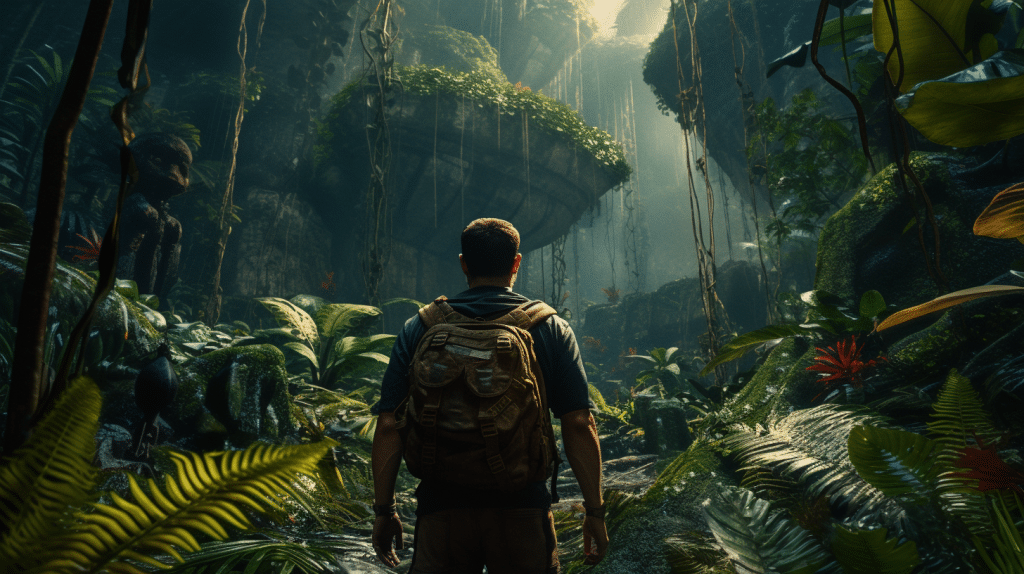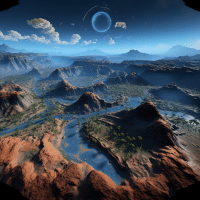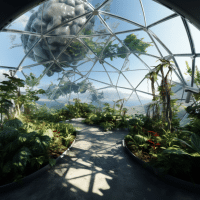Immersive Education: Unveiling 3 Ways to Learn with VR Technology

Immersive education is revolutionizing the way we learn. With virtual reality (VR) technology, students can now explore and experience the world in ways that were never before possible. From exploring the depths of the ocean to visiting the surface of Mars, VR technology is opening up a world of educational opportunities. In this blog, we will explore three ways to learn with VR technology and how it can help students gain a deeper understanding of the world around them.
The first way to learn with VR technology is through interactive simulations. With interactive simulations, students can explore a variety of environments and scenarios in a safe and controlled environment. From exploring the human body to learning about the solar system, interactive simulations can help students gain a better understanding of the world around them. The second way to learn with VR technology is through virtual field trips. With virtual field trips, students can explore a variety of locations without ever leaving the classroom.
From visiting the Great Wall of China to exploring the Amazon rainforest, virtual field trips can help students gain a better understanding of the world around them. The third way to learn with VR technology is through virtual reality games. With virtual reality games, students can explore a variety of topics in a fun and engaging way. From learning about history to exploring the world of science, virtual reality games can help students gain a better understanding of the world around them. Immersive education is revolutionizing the way we learn.
With VR technology, students can explore and experience the world in ways that were never before possible. From interactive simulations to virtual field trips to virtual reality games, there are a variety of ways to learn with VR technology.
What is Virtual Reality (VR) Technology?
Virtual Reality (VR) technology is revolutionizing the way we learn and experience the world around us. By creating an immersive and interactive environment, VR allows users to step into a simulated reality and engage with it on a whole new level. With the power of VR, students can explore intricate 3D worlds, manipulate objects, and even interact with virtual characters, bringing their learning to life in ways never before possible. This exciting and innovative approach to education has the potential to transform traditional classroom settings and open up a world of endless possibilities for students of all ages.

Here are 3 ways to learn with VR technology:
1. Virtual Field Trips:
With the help of Virtual Reality (VR), students can embark on captivating virtual field trips to extraordinary places that would otherwise be inaccessible. They can dive into the mesmerizing depths of the ocean, wander through the intricate corridors of historical landmarks, or immerse themselves in the vibrant culture of a foreign country. This innovative approach not only broadens their horizons but also fosters a profound understanding and appreciation of the diverse world that surrounds them.
2. Hands-on Learning:
Virtual Reality (VR) technology revolutionizes the educational experience by providing students with unparalleled opportunities to interact with the environment in ways that are not possible in the real world. Through VR, students can manipulate objects, explore diverse scenarios, and immerse themselves fully in the subject matter. This immersive learning experience enhances their understanding, retention, and application of knowledge, paving the way for more engaging and effective education.
3. Collaborative Learning:
Virtual Reality (VR) technology offers a remarkable opportunity to foster a truly immersive and collaborative learning environment. By utilizing VR, students can not only work together to solve complex problems but also explore a multitude of realistic scenarios. This interactive and engaging approach to education enables them to develop a deeper comprehension of the subject matter while enhancing critical thinking, problem-solving, and teamwork skills.
With VR, the possibilities for collaborative learning are virtually endless! VR technology is an exciting and innovative way to learn. It allows students to explore the world around them, interact with the environment, and gain a deeper understanding of the subject matter. With VR, students can take virtual field trips, engage in hands-on learning, and collaborate with their peers.
Exploring 3 Ways to Learn with VR Technology
Virtual reality (VR) technology has completely revolutionized the way we learn by immersing us in a whole new world of educational possibilities. It has opened up endless opportunities for interactive and experiential learning that were previously unimaginable. With VR, we can now embark on thrilling journeys of exploration and discovery, allowing us to grasp complex concepts with unparalleled depth and clarity. VR technology has opened up a world of immersive education, allowing us to explore and experience new concepts in a way that was never before possible.
With VR, we can now learn in a more interactive and engaging way, making the learning process more enjoyable and effective.
One of the remarkable ways VR is transforming education is by creating virtual simulations of real-world scenarios. Through these simulations, students can engage in realistic practice and refine their skills in a safe and controlled environment. For instance, medical students can simulate surgical procedures in a virtual operating room, enabling them to gain valuable hands-on experience without any real-world risks. Similarly, aspiring pilots can take flight in a virtual cockpit, perfecting their maneuvers and decision-making abilities.
The power of VR simulations lies in their ability to provide invaluable training experiences while mitigating potential consequences.
Another captivating application of VR in education is the ability to explore virtual worlds and environments. By donning a VR headset, students can embark on breathtaking virtual expeditions that transport them to the depths of the ocean or the hallowed grounds of historical sites. Through these immersive journeys, students can vividly experience the wonders of nature, delve into historical events, and gain a profound understanding of the subjects they are studying.
The ability to step inside these virtual worlds allows for a level of engagement and comprehension that traditional educational methods simply cannot match.
Furthermore, VR technology empowers educators to create interactive learning experiences that actively involve students in the learning process. By interacting with virtual objects and participating in virtual experiments, students can deepen their understanding of complex concepts and develop critical thinking skills.
For example, students can manipulate virtual molecules to comprehend chemical reactions, or they can engage in virtual role-playing scenarios to explore historical events from different perspectives. These interactive experiences not only make learning more enjoyable and engaging but also enhance knowledge retention and application.
In summary, the impact of VR technology on education is transformative. It enables students to practice and hone their skills through realistic simulations, explore virtual worlds to gain a deeper understanding of concepts, and actively engage with the material through interactive learning experiences. With VR, education becomes an immersive adventure that empowers learners to embrace knowledge in ways that were once unimaginable.
Virtual Field Trips
Virtual reality (VR) technology has revolutionized the way we learn. With the help of immersive experiences, students can now explore the world without ever leaving the classroom. Virtual field trips are a great way to engage students in learning, and there are three ways to make the most of this technology. The first way to learn with VR is through 360-degree videos.
These videos allow students to explore a variety of places, from the depths of the ocean to the top of a mountain. With 360-degree videos, students can get a full view of the environment and gain a better understanding of the subject matter. The second way to learn with VR is through interactive simulations. These simulations allow students to explore a virtual environment and interact with objects in the environment.

For example, students can explore a virtual museum and learn about the history of a particular artifact. The third way to learn with VR is through augmented reality (AR). AR allows students to explore a physical environment while also interacting with virtual objects.
For example, students can explore a physical museum and learn about the history of a particular artifact while also interacting with virtual objects. VR technology has opened up a world of possibilities for students. With virtual field trips, students can explore the world without ever leaving the classroom. By utilizing 360-degree videos, interactive simulations, and augmented reality, students can gain a better understanding of the subject matter and gain a more immersive learning experience.
Interactive Learning Experiences
The world of education is rapidly evolving, and virtual reality (VR) technology is at the forefront of this revolution. With immersive learning experiences, students can explore new worlds, interact with virtual objects, and gain a deeper understanding of the material.
Here are three ways to learn with VR technology: First, VR can be used to create interactive simulations. Students can explore a virtual environment and interact with objects to gain a deeper understanding of the material. For example, a student studying the solar system can explore a virtual planetarium and observe the planets in motion.
This type of immersive learning experience can help students gain a better understanding of the material. Second, VR can be used to create virtual field trips. Students can explore a virtual environment and gain a firsthand experience of the material. For example, a student studying ancient Egypt can explore a virtual pyramid and learn about the culture and history of the region. This type of immersive learning experience can help students gain a better understanding of the material. Finally, VR can be used to create interactive games.
Students can explore a virtual environment and interact with objects to gain a deeper understanding of the material. For example, a student studying the human body can explore a virtual anatomy lab and interact with the organs and systems of the body. This type of immersive learning experience can help students gain a better understanding of the material. VR technology is revolutionizing the way we learn, and these three ways to learn with VR technology are just the beginning. With immersive learning experiences, students can explore new worlds, interact with virtual objects, and gain a deeper understanding of the material.
Immersive Simulations
Immersive simulations are revolutionizing the way we learn. With virtual reality (VR) technology, students can now explore and experience educational content in a way that was never before possible. From exploring the depths of the ocean to visiting the surface of Mars, VR technology is providing students with an immersive learning experience that is both engaging and educational.
Here are three ways to learn with VR technology: First, VR technology can be used to create interactive simulations that allow students to explore and interact with their environment. By using VR headsets, students can be transported to a virtual world and explore the environment as if they were actually there. This type of immersive learning allows students to gain a deeper understanding of the material they are studying. Second, VR technology can be used to create virtual field trips.
With VR technology, students can visit places they would otherwise never be able to experience in person. From visiting ancient ruins to exploring the depths of the ocean, virtual field trips provide students with an immersive learning experience that is both educational and exciting. Finally, VR technology can be used to create interactive games and activities.
By using VR headsets, students can play educational games and activities that are designed to help them learn. From solving puzzles to exploring virtual worlds, interactive games and activities provide students with an engaging and educational learning experience. Immersive simulations are revolutionizing the way we learn. With VR technology, students can explore and experience educational content in a way that was never before possible. From interactive simulations to virtual field trips and interactive games and activities, VR technology is providing students with an immersive learning experience that is both engaging and educational.

Conclusion
As we have seen, virtual reality technology is revolutionizing the way we learn. It offers an immersive experience that allows us to explore and interact with our environment in ways that were never before possible. With VR, we can learn in three distinct ways: by experiencing a virtual environment, by engaging with interactive simulations, and by collaborating with others in a virtual space. This technology has the potential to revolutionize the way we learn, making it more engaging and effective. With VR, the possibilities for learning are endless.
In conclusion, virtual reality technology is revolutionizing the way we learn. It offers an immersive and interactive experience that can take students on virtual field trips, provide interactive learning experiences, and create immersive simulations. With VR technology, students can explore the world without ever leaving the classroom. It is an exciting and innovative way to learn that can help students gain a deeper understanding of the material and develop a greater appreciation for the world around them. By utilizing VR technology, educators can create an engaging and interactive learning environment that will help students reach their full potential.


















